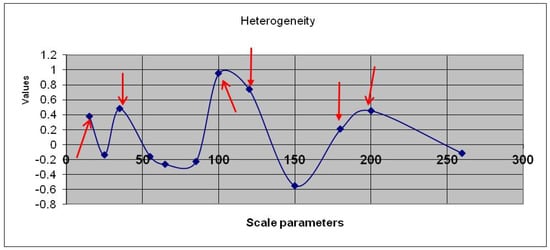Breast cancer is a leading cause of cancer mortality in women worldwide. Using the Infinium MethylationEPIC BeadChip, we analyzed plasma sample methylation to identify the
SRCIN1 gene in breast cancer patients. We assessed
SRCIN1-related roles and pathways for their biomarker potential. To
[...] Read more.
Breast cancer is a leading cause of cancer mortality in women worldwide. Using the Infinium MethylationEPIC BeadChip, we analyzed plasma sample methylation to identify the
SRCIN1 gene in breast cancer patients. We assessed
SRCIN1-related roles and pathways for their biomarker potential. To verify the methylation status, quantitative methylation-specific PCR (qMSP) was performed on genomic DNA and circulating cell-free DNA samples, and mRNA expression analysis was performed using RT‒qPCR. The results were validated in a Western population; for this analysis, the samples included plasma samples from breast cancer patients from the USA and from The Cancer Genome Atlas (TCGA) cohort. To study the
SRCIN1 pathway, we conducted cell viability assays, gene manipulation and RNA sequencing.
SRCIN1 hypermethylation was identified in 61.8% of breast cancer tissues from Taiwanese patients, exhibiting specificity to this malignancy. Furthermore, its presence correlated significantly with unfavorable 5-year overall survival outcomes. The levels of methylated
SRCIN1 in the blood of patients from Taiwan and the USA correlated with the stage of breast cancer. The proportion of patients with high methylation levels increased from 0% in healthy individuals to 63.6% in Stage 0, 80% in Stage I and 82.6% in Stage II, with a sensitivity of 78.5%, an accuracy of 90.3% and a specificity of 100%.
SRCIN1 hypermethylation was significantly correlated with increased
SRCIN1 mRNA expression (
p < 0.001). Knockdown of SRCIN1 decreased the viability of breast cancer cells.
SRCIN1 silencing resulted in the downregulation of ESR1, BCL2 and various cyclin protein expressions.
SRCIN1 hypermethylation in the blood may serve as a noninvasive biomarker, facilitating early detection and prognosis evaluation, and
SRCIN1-targeted therapies could be used in combination regimens for breast cancer patients.
Full article
 IJMS
IMPACT
IJMS
IMPACT Applied Sciences
IMPACT
Applied Sciences
IMPACT Sustainability
IMPACT
Sustainability
IMPACT Sensors
IMPACT
Sensors
IMPACT JCM
IMPACT
JCM
IMPACT Materials
IMPACT
Materials
IMPACT Molecules
IMPACT
Molecules
IMPACT Energies
IMPACT
Energies
IMPACT Electronics
IMPACT
Electronics
IMPACT Remote Sensing
IMPACT
Remote Sensing
IMPACT Cancers
IMPACT
Cancers
IMPACT Nutrients
IMPACT
Nutrients
IMPACT Mathematics
IMPACT
Mathematics
IMPACT Foods
IMPACT
Foods
IMPACT Buildings
IMPACT
Buildings
IMPACT Polymers
IMPACT
Polymers
IMPACT Animals
IMPACT
Animals
IMPACT Water
IMPACT
Water
IMPACT Plants
IMPACT
Plants
IMPACT Agronomy
IMPACT
Agronomy
IMPACT Biomedicines
IMPACT
Biomedicines
IMPACT Processes
IMPACT
Processes
IMPACT Microorganisms
IMPACT
Microorganisms
IMPACT Diagnostics
IMPACT
Diagnostics
IMPACT Nanomaterials
IMPACT
Nanomaterials
IMPACT Viruses
IMPACT
Viruses
IMPACT Medicina
IMPACT
Medicina
IMPACT Healthcare
IMPACT
Healthcare
IMPACT Cells
IMPACT
Cells
IMPACT Forests
IMPACT
Forests
IMPACT Agriculture
IMPACT
Agriculture
IMPACT Land
IMPACT
Land
IMPACT JMSE
IMPACT
JMSE
IMPACT IJERPH
IJERPH
 Symmetry
IMPACT
Symmetry
IMPACT Genes
IMPACT
Genes
IMPACT Pharmaceutics
IMPACT
Pharmaceutics
IMPACT Coatings
IMPACT
Coatings
IMPACT Micromachines
IMPACT
Micromachines
IMPACT Pharmaceuticals
IMPACT
Pharmaceuticals
IMPACT Atmosphere
IMPACT
Atmosphere
IMPACT Children
IMPACT
Children
IMPACT Religions
IMPACT
Religions
IMPACT Antioxidants
IMPACT
Antioxidants
IMPACT Life
IMPACT
Life
IMPACT Metals
IMPACT
Metals
IMPACT Biomolecules
IMPACT
Biomolecules
IMPACT Vaccines
IMPACT
Vaccines
IMPACT Education Sciences
IMPACT
Education Sciences
IMPACT Minerals
IMPACT
Minerals
IMPACT Horticulturae
IMPACT
Horticulturae
IMPACT Brain Sciences
IMPACT
Brain Sciences
IMPACT JPM
IMPACT
JPM
IMPACT Bioengineering
IMPACT
Bioengineering
IMPACT



















